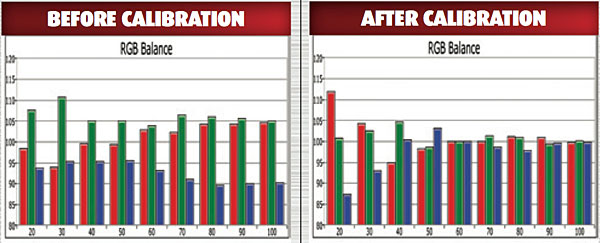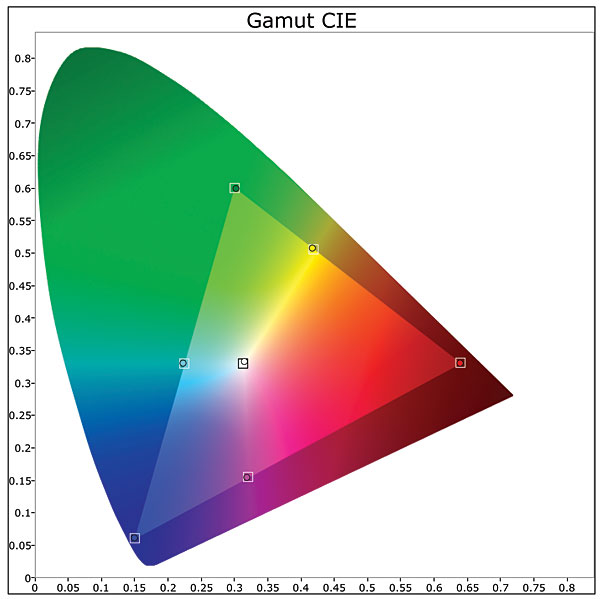Runco QuantumColor Q-650i LED-DLP Projector HT Labs Measures
Full-On/Full-Off Contrast Ratio: 3494:1
Except as noted, all of the measurements here were taken with the projector adjusted for the most accurate image, the gamma on 2.2, ConstantContrast on Medium, and the projector located about 13.5 feet from a 78-inch-wide Stewart Filmscreen StudioTek 130 screen (16:9, 1.3 gain).
The full-on/full-off contrast ratio above (which is sometimes referred to as the peak contrast ratio, the sequential contrast ratio, or the dynamic range) was obtained postcalibration. At a peak white level of 17.08 foot-lamberts on the screen used here, this resulted in a black level of 0.0049 ft-L. While not the best black level ever to darken our door, this is nevertheless comparable to most of the single-chip, DLP projectors we’ve tested. If ConstantContrast is increased to High, the peak contrast increases to 3711:1, although the change was visually undetectable. Turn ConstantContrast off, however, and the peak contrast drops to 1213:1 with a black level of 0.014 ft-L, which does dramatically degrade the visible result.

The precalibration result shown was taken with the Color Temperature set to 5500K; all other calibration controls zeroed out or in their default settings, and Color Gamut set to Auto. The precalibration grayscale Delta E averaged about 7.3, the color Delta E (a weighted average of all factors for the three primary and three secondary colors) 3.7. The maximum color delta was 7.65 for cyan. (The lower the Delta E, the closer the result to the desired Rec. 709 HD standard. Values under 3.0 for both grayscale and color are generally considered excellent.)
The above out-of-box results produced decent performance, but a full calibration, using all of the available RGB adjustments for grayscale and the color-management controls (in the PCE menu) for color gamut, produced the significantly better results shown in the postcalibration chart. The bar graphs at 20 percent and 30 percent brightness still look a little dicey on the chart (it was not possible to level them out without disrupting the more important midbrightness results), but even there the maximum Delta E did not exceed 3.07. The postcalibration Delta E average for grayscale was 1.77, and the Delta E for color an exceptional 0.75.

Choosing the Native Color Gamut described in the review, which also engages Runco Smart Color, produces a superwide color gamut, with green almost halfway between its correct position and the top of the color area in the chart, red deep into the lower-right-hand corner, and blue just outside the colored region.

As noted in the review, I alternated between the 2.2 and 2.35 settings for gamma depending on the program source. The actual measured gamma after calibration varied somewhat from these settings: 2.2 averaged 2.12, with a low of 1.91 at 80 percent brightness and a high of 2.34 at 50 percent; 2.35 ranged from a low of 1.84 at 90 percent brightness to a high of 2.48 at 40 percent, with an average of 2.23. —TJN




























































